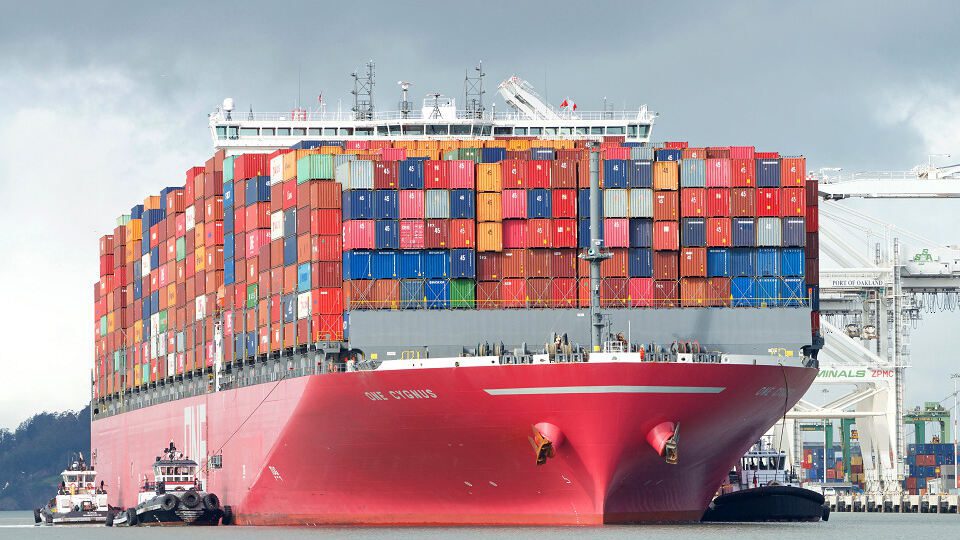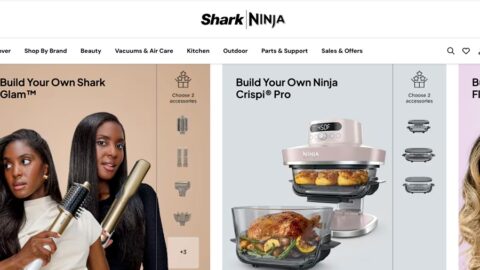The retail ideal can be described succinctly as “Three P’s and a T”: The right product, in the right place, at the right time and at the right price.
So what does a retailer do when supply chains are stopped up, slow or just plain broken — and they don’t even have reliable information on exactly when items will arrive? (Besides add another P, for pray?) That’s the troubling situation many retailers find themselves in this holiday season. The Adobe Digital Economy Index, released on Oct. 20, revealed that out-of-stock product messages have jumped 172% this holiday season compared to the pre-pandemic period (January 2020).
Retailers won’t be able to keep these challenges from consumers, raising the possibility that people will either engage in panic buying or be discouraged from shopping altogether — neither of which would be good for the retail industry or the economy. Supply chain problems have crossed over from largely invisible backend challenges to front-page news in the mainstream media: factories closed, or slowed to a crawl, because of COVID outbreaks; container ships circling at sea because ports are too clogged; and land transportation, distribution centers and stores understaffed because of domestic labor shortages.
“This is kind of Armageddon, because everything bad is coming together at the same time,” said Kenneth Cochran, Senior Director at the Alvarez & Marsal Consumer and Retail Group in an interview with Retail TouchPoints. He’s not alone in this dire assessment: interviews with several industry experts reveal that 2021 is indeed an outlier in terms of supply chain disruptions, and also that a whole series of decisions, large and small, have contributed to this difficult situation. Additionally, the experts note that retail, and the economy at large, will be dealing with these disruptions into 2022 and potentially beyond, particularly if new COVID variants or increasingly common natural disasters conspire to slow things down even further.
To take just one example of unintended consequences, Trump-era tariffs on Chinese goods encouraged many retailers to switch to suppliers in Vietnam — but then that country was hit so hard by the COVID-19 pandemic that some factories had to stand up tent cities to house quarantined workers. “Getting the products out of origin destinations has been a real challenge, and it’s been very impactful in the apparel and furniture categories,” said Cochran.
Fortunately, there are some short-term steps retailers can take to mitigate at least some of these problems, including:
- Track demand signals about early-season purchasing trends, and share them both internally and with fulfillment partners in order to more effectively route the stock that’s already in country;
- Use AI-powered analytics and customer data to research allowable substitutes for out-of-stock items;
- Leverage loyalty programs to offer members benefits such as price guarantees for items they pre-order;
- Proactively communicate with shoppers about delays and out-of-stocks; and
- Strategically limit promotional activity to temper demand for key products or specific channels/locations.
Address Supply Chain Challenges with Better Demand Data
Supply chain problems are inextricably linked with demand changes, which themselves have been dramatic. “Consumer demand has become more ‘unforecastable,’” said Balika Sonthalia, a Partner at Kearney and co-author of the firm’s State of Logistics report in an interview with Retail TouchPoints. “In some consumer categories demand skyrocketed in a very short time, with others it was a seesaw, and still others went down and didn’t come back up.
“The result is that forecasts have fluctuated a lot,” Sonthalia added. “Basic concepts like how much to deploy, where to deploy, how many days of supply to carry and [setting] replenishment levels have had to be adjusted multiple times in the past year.”
Sonthalia recommended meeting these high uncertainty levels with the data that retailers have access to. “Retailers must be prepared to pivot,” she noted. “Every time they sense a [demand] signal, for example a promotion that’s really taking off, they need to send that signal back to their DC to see if the DC could send, say, four times the regular volume.”
Ideally, retailers’ communications about demand changes should travel even further up the supply chain, to suppliers and manufacturers. “It all comes back to good analytics and AI-enabled sensing algorithms, combined with the ability to connect back to the supply chain,” said Sonthalia.
Retailers that are in the best position to accomplish this are those that have “leveraged learnings from the disruptions of the past two years, and also realized that nothing is ever going to be perfect,” said Peter Bolstorff, EVP for Corporate Development at ASCM (Association for Supply Chain Management) in an interview with Retail TouchPoints. Earlier investments in synchronized planning and intelligent supply chains that are more heavily weighted to domestic manufacturers are now paying off for these companies, he added.
Encourage Early Ordering to Guide Replenishment Choices
Well-positioned retailers can then use a range of tools to bring demand into better balance with supply. “Retailers need to reinforce ordering early to their customers and also identify early sources of supply,” said Bolstorff. Then, “they can replenish their shelves, if not with the exact thing they’re looking for but something that’s an acceptable substitute. I believe we’ll see more combinations of private label products so that retailers can secure a [sufficient] volume of things more locally.”
However, engineering successful product substitutions depends heavily on a retailer’s knowledge of its shoppers — and its own digital agility. Retailers must ask themselves, “What do I know about my customers’ acceptance of an allowable domestic substitution, and how do I make sure that I have enough flexibility online to service that community with those acceptable substitutions?” said Bolstorff.
Loyalty programs, which offer not just a trusted communication method but treasure troves of data about product trends and consumer purchase triggers, are proving to be invaluable assets this holiday season. “Those [retailers] that have invested in having connected customers via loyalty programs can go out with a campaign saying that they will guarantee prices for pre-orders, and offer a benefit if they do,” said Bolstorff. “But if you don’t have a loyalty program in place, good luck.”
Underpromise and Overdeliver
Retailers also need to be wary about making promises to customers that they can’t keep, particularly during the heat of the holiday season. “Some large retailers are good at selling something they don’t [currently] have and telling you when you’ll get it, but other retailers haven’t built that capability,” said Alvarez & Marsal’s Cochran. “It’s become extremely hard to predict exactly when something will arrive. If Johnny wants his toy and you tell him he’s going to get it, and you don’t deliver, you will make those parents angry.” Retailers that act without solid supply data can risk losing a customer to a competitor, potentially for good.
In general, retailers need to be “thoughtful about how they communicate with customers and keep them engaged” when dealing with delays and shortages, Cochran added: “You have to assume that something will go wrong to affect availability, whether it’s labor or another issue. Retailers need to plan how they will react when that happens.”
Cochran also recommended that retailers pull back on promotional activity as long as they are uncertain about delivery dates — and marketers should consider extending this caution beyond the holiday season.
“If you know you’re going to be out of stock in three weeks, why in the world would you put an item on sale?,” asked Cochran, adding that he believes “there will be out-of-stocks in the coming year; it’s already changed the way retailers are promoting and advertising. They will have to fund the increased freight costs somewhere.”
Long-Term Recommendations
While the holiday season has intensified all these challenges, they will not magically disappear on Dec. 26. Simon Croom, a Professor of Supply Chain Management at the University of San Diego School of Business, believes that “supply chains of the future will be supply chains of scarcity. I’m not talking about queueing for five hours for a loaf of bread, but we won’t be able to get everything we want every time we go to the store.”
The causes of supply chain disruptions go beyond the current spate of clogs and backups; they include unintended consequences of governmental policies such as trade disputes and retaliation: “It’s all well and good to say ‘We don’t want to buy from China,’ but when you don’t, everyone complains,” said Croom. “Interdependence is a massive attribute — until it goes wrong.”
Croom offered several recommendations for longer-term supply chain solutions for retailers, CPGs and brands:
- Improve communication and coordination between supply chain and marketing departments: “The supply chain has to reflect marketing, and vice versa,” said Croom. In some cases, product availability should dictate marketing activity: “If you know what you have coming through the pipeline, then you should be out marketing and selling it.”
- Reduce SKUs and complexity in general: “When there’s more choice and product variety, there’s more complexity, and you need more ‘slack’ in terms of capacity around things like production lines and warehouse space,” said Croom. “A good example is Bumblebee canned tuna: at the start of the pandemic, they reduced their number of SKUs from 91 to 19.”
- Move away from the whole idea of “lean” supply chains: “Most of the time when I consult or do research, it’s all about lean, efficiency and cost reduction — and no one ever got sacked for cutting costs,” said Croom. “But the minute you take out resources, you’re in danger of starvation, not just anorexia. If you’re going to offer a lot of choice, you need a supply chain that’s not managed on cost alone.”
- Prepare for the unexpected: This advice may seem paradoxical, but it’s really more about planning for multiple contingencies. For example, given the impact of factors like climate change, which makes severe weather events more common, there’s increased danger of the “bullwhip effect, when a small disturbance in one part of the supply chain causes a massive disturbance just a few links away,” said Croom.
Fortunately for retailers and consumers, “supply chain professionals are used to ‘firefighting,’” said Croom. “They’re constantly trying to plug holes.”













